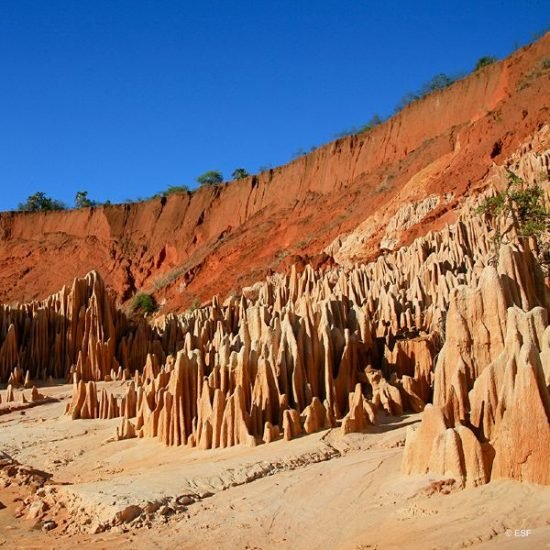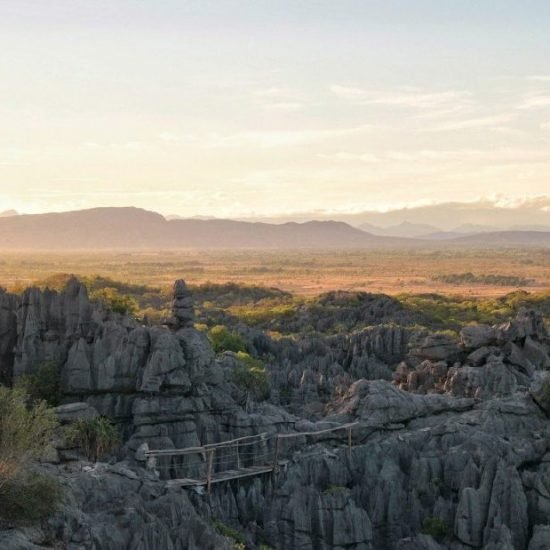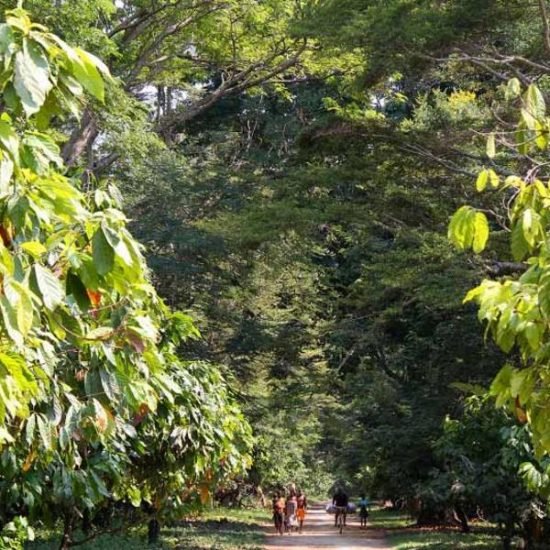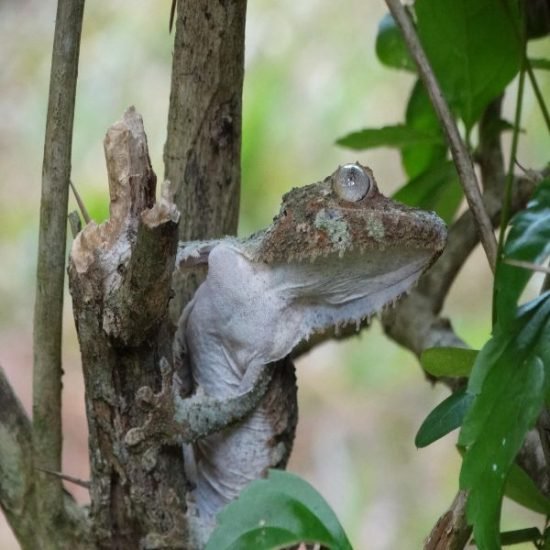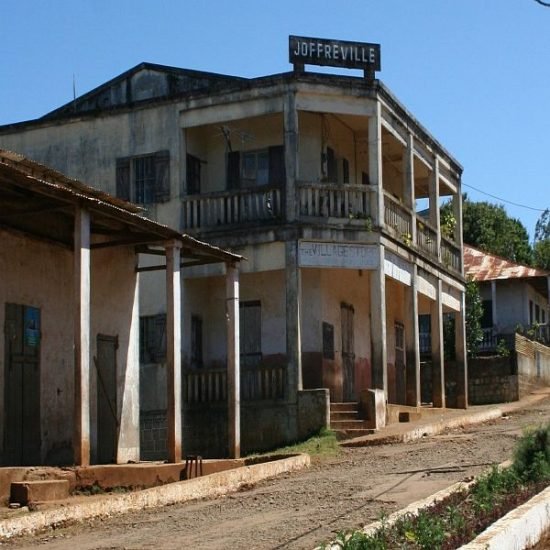Sambirano Valley & the Parks of the North
€450 per person
A 7 days private tour to discover Sambirano Valley, its villages, the world famous cocoa plantations and the National Parks of Northern Madagascar.
Highlights
Amber Mountain National Park, Ankarana National Park, Red Tsingy and Sambirano Valley
Departure/Arrival
Diego Suarez / Nosy Be
When to Go
April - November
Included
Private Car Throughout The Tour with Accompanying Guide | Entry Fee of Mentioned Excursions | Hotels on Dinner and Bed and Breakfast basis | Lunches on day 5 and 6 | Private Speedboat Ankify - Nosy Be
Not Included
Domestic flights | Entry Visa (€35 pp) | Lunches not mentioned | Drinks | Personal Expenses | Anything not Mentioned in Included
What to Bring
Comfortable athletic clothing, sleeping bag, hiking shoes, hat and warm light jacket and light trench coat.
Options
Visit Sambirano Valley on a bicycle, add €90 pp
Prices per person
- 1 Traveler €1350, 1 single
- 2 Travelers €800, 1 tw/dbl
- 3 Travelers €700, 1 tpl
- 4 Travelers €550, 2 tw/dbl
- 5 Travelers €500, 1 tw/dbl + 1 tpl
- 6 Travelers €450, 3 tw/dbl
For more options, please contact us
1
Day 1 Diego Suarez - Joffreville 40 km, 1 hour drive
We begin the tour to the south in the morning by visiting Amber Mountain National Park. By car we reach Joffreville in about 1 hour, the entrance to the park. Joffreville, a small characteristic colonial village, where time stopped in the 1960s. Old military hangars and beautiful old Creole style villas make of Joffreville the favorite destination for the french military during colonial time. The park, a rainforest comprising six volcanic lakes and three waterfalls, is a paradise for many endemic animals and plants. Located from 800 m above sea level to more than 1400 m above sea level, the Montagne d’Ambre National Park offers spectacular views on clear days. You will also notice a difference in temperatures of up to 10 degrees from the surrounding areas. We will choose our circuit with a local guide. Free afternoon in Joffreville. Hotel Nature Lodge or similar.
2
Day 2 Joffreville - Red Tsingy - Ankarana East 170 km, 5 hours' drive
After breakfast we continue traveling south to the Irodo Valley to admire one of the main sight of northern Madagascar, the Red Tsingy, a natural spectacle caused by soil erosion. Back on the main road to reach Mahamasina, by the entrance of Ankarana National Park. This park is characterized by a complex of limestone rocky pinnacles, called Tsingy, formed by the erosion caused by rich waterways; patches of dense tropical jungle; strips of deciduous forest, deep caves and canyons. Arrival is expected by 1PM, on time for a short lunch break and a 2/3 hours' hike in the park. The circuit will be chosen on the day with a local expert. Hotel Relais Ankarana or similar.
3
Day 3 Ankarana East
We will spend the whole day hiking in the park. Hotel Relais Ankarana or similar.
4
Day 4 Ankarana East - Ambanja - Andranomandevy 150 km, 4 hours' drive
After breakfast back on the road, in Ambanja, we will meet our local guide that will take us on tour in the Sambirano Valley. By car we drive along the track parallel with Sambirano river through a green landscape where rice fields, plantations and typical villages of the area rise. The Sambirano Valley is the economic lung of the region, as evidenced by the incessant coming and going of bicycles and motorcycles. We will be crossing the river in a canoe and with a cart pulled by one or more zebu we arrive in Andranomandevy where we will spend the night. We will sleep in a simple bungalow built to support the community run by the women of the village.
5
Day 5 Andranomandevy – Antanambao 10/12 km on foot
Depending on the day and the prohibitions that govern this sacred place, in the morning we plan to visit the thermal spring and the marsh that surrounds an islet where thousands of birds nest. Then our walk through cocoa trees and and splendid rice fields on the mountainside. Crossing the villages we can realize how distant our world is to the locals, daily life flows slowly but with a certain charm. We arrive in Antanambao by noon, installation in our cabins and lunch at the community accommodation. In the afternoon, we can swim and walk along the banks of the Ambahatra river.
6
Day 6 Antanambao - Ambobaka - Ambanja 5 km on foot and 20 km, 1 hour drive
Morning walk to join the vehicles on the other side of the river then transfer to the village of Ambobaka which is known throughout northern Madagascar as a center of traditional medicine. A line of healers exercises ancestral knowledge which allows them to heal fractures and other trauma, using plants and different types of massage.
Short crossing in a dugout canoe to the "Bons Pères" waterfall for a picnic, relaxation and swimming in this Garden of Eden where a succession of waterfalls form natural pools.
In the afternoon, we will take a pirogue ride along the Ramena river which unrolls its bucolic landscape in silence to the village of Ambobaka before joining the track which returns to Ambanja. Hotel Palmanova or similar.
7
Day 7 Ambanja - Ankify - Nosy Be
8AM, transfer to Ankify to board a private speed boat that will take us to Nosy Be. From the port of Nosy Be, we will transfer you to your chosen hotel. End of our services.


